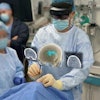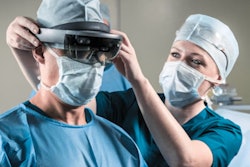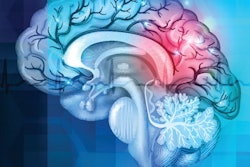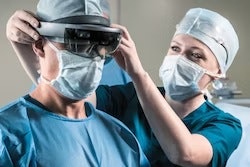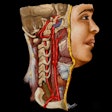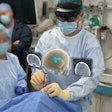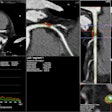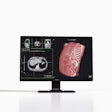Using virtual reality (VR)-based sedation during interventional radiology procedures reduces patient pain and anxiety, researchers have found.
And it appears to do so without increasing procedure time, according to a team led by Ryan Schaake of Temple University in Philadelphia. The study results were published March 12 in the Journal of Vascular and Interventional Radiology.
"While it has not been the standard of care to medically treat patient anxiety during these procedures, high anxiety levels have been associated with longer procedure times, increased need for medication, and exacerbated physiological stress," the group wrote. "Both preoperative and postoperative anxiety levels have been shown to be positively correlated with self-reported pain."
As use of invasive interventional procedures has grown, interest in nonpharmacological methods to ease patients' anxiety and pain has as well, the team noted. And drug-based sedation isn't necessary for interventional procedures such as PICC placements and thyroid biopsies, which are performed with local anesthesia.
The team investigated whether using a VR tool could improve patient experiences via a study that included 107 patients undergoing peripherally inserted central catheter (PICC) or fine-needle aspiration (FNA) thyroid biopsy. Participants were randomly assigned to receive either standard of care or standard of care plus VR assistance during these procedures. The researchers measured patients' pain and anxiety using the Visual Analogue Scale (VAS) before and after the procedure. (The VAS scale ranges from zero to 10, with 0 equal to no pain and 10 equal to "worst pain possible.")
Of the total study cohort, 59 patients underwent PICC (33 of which via both standard of care and VR) and 48 underwent thyroid biopsy (26 of which via both standard of care and VR). Schaake and colleagues also tracked procedure time, calculating it from the initial procedure "time-out" to completion of dressing the patient's operation site. After the procedure, patients were asked to complete an 11-question survey about their experience.
The VR tool consisted of an HP Reverb G2 104 head-mounted display and wireless mouse that simulated a tropical island environment. Patients viewed a sunset sky with ambient audio of ocean waves and seagulls and were able to select music from a catalog of five songs; the protocol also included an animated fairy called Emma who invited the patient to engage in breathing exercises and offered positive encouragement.
The researchers found that adding VR to the standard of care for these procedures improved patients' Visual Analogue Scale scores.
| Changes in VAS pain and anxiety scores after interventional procedures with and without virtual reality | |||
|---|---|---|---|
| Procedure | Standard of care | Standard of care plus virtual reality | p-value |
| PICC placement | |||
| VAS pain (mean change) | -0.16 | -3.08 | 0.07 |
| VAS anxiety (mean change) | -0.56 | -2.63 | 0.05 |
| Thyroid biopsies | |||
| VAS pain | +0.55 | -0.88 | 0.02 |
| VAS anxiety | -0.11 | -2.07 | 0.15 |
Using VR did not significantly increase procedure times, the team reported: For PICC placement, adding it decreased the time from 14 minutes to 11 minutes (p = 0.34), while for thyroid biopsy, adding virtual reality increased time from 15.5 minutes to 23 minutes (p = 0.21).
VR as digital sedation shows promise for easing patients' experience of interventional procedures, according to the group.
"The results from this study indicate that digital sedation, specifically through virtual reality, may improve the tolerability of procedures that do not require pharmacological sedation," it concluded. "As this field expands and garners support, virtual reality has the potential to evolve into a non-pharmacological medicinal tool, offering relief from patients’ pain and anxiety associated with healthcare interventions."
The complete study can be found here.



